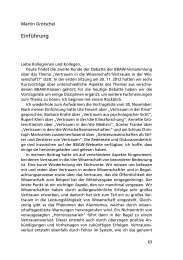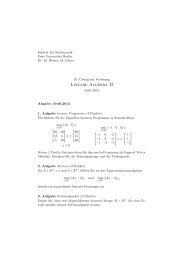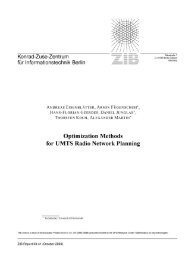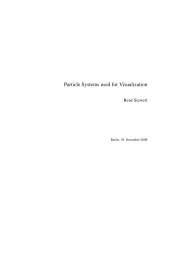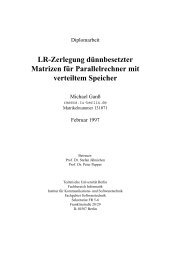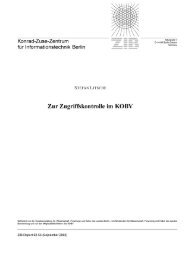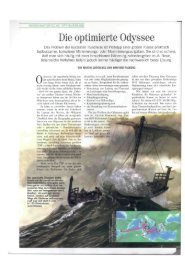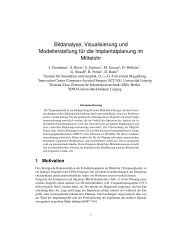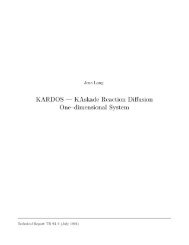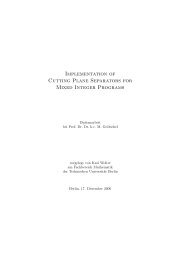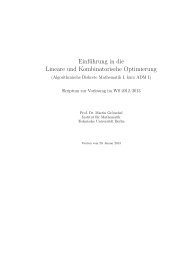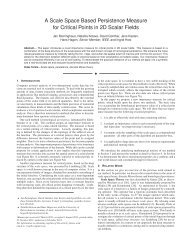SC-90-09.pdf - ZIB
SC-90-09.pdf - ZIB
SC-90-09.pdf - ZIB
Create successful ePaper yourself
Turn your PDF publications into a flip-book with our unique Google optimized e-Paper software.
1. A Refined Newton-Mysovskii Theorem<br />
Consider a nonlinear operator equation of the form<br />
F{x) = 0 (1.1)<br />
where F : D C X —* Y is a, nonlinear mapping defined on a convex domain D<br />
of a Banach space X with values in a Banach space Y. Under certain conditions<br />
Newton's method<br />
x k+1 =x k -F\x k )- 1 F(x k ) it = 0,1,... (1.2)<br />
produces a sequence {x fe }£L 0 which converges to a solution x* of the equation<br />
(1.1). In (1.2) F'(x k ) denotes the Frechet derivative of the nonlinear operator<br />
F at the point x k . At each step of Newton's method a linear equation of the<br />
form<br />
F'(x k )Ax k = -F(x k ) (1.3)<br />
must be solved yielding the correction<br />
x k+1 =x k + Ax k . (1.4)<br />
The first convergence theorem for Newton's method in Banach spaces is due to<br />
L.V. KANTOROVITCH [8] — originally even in an affine-invariant form. The<br />
Kantorovitch theorem gives sufficient conditions under which equation (1.1)<br />
has a unique solution x* in a certain neighborhood of a; 0 , and proves that under<br />
those conditions the iterates given by (1.2) converge quadratically to x*. There<br />
is a huge literature concerning different aspects of the Kantorovitch theorem.<br />
For an account on some of the results, we refer the reader to the monograph of<br />
POTRA/PTAK [11] and the paper of YAMAMOTO [13].<br />
Another approach in studying the convergence of Newton's method was considered<br />
by MYSOVSKII [10]. We start from an affine invariant version of the<br />
Mysovskii theorem that has been first considered by DEUFLHARD and HEINDL<br />
[7] and later refined by BOCK [5].<br />
Theorem 1.1 Let F : D C X —> Y be continuously Frechet differentiable, with<br />
F'(x) invertible for all x 6 D, D open and convex. Assume that one can find a<br />
starting point x° £ D and constants a, u> > 0 such that<br />
IIF^x 0 )" 1^0)!!



